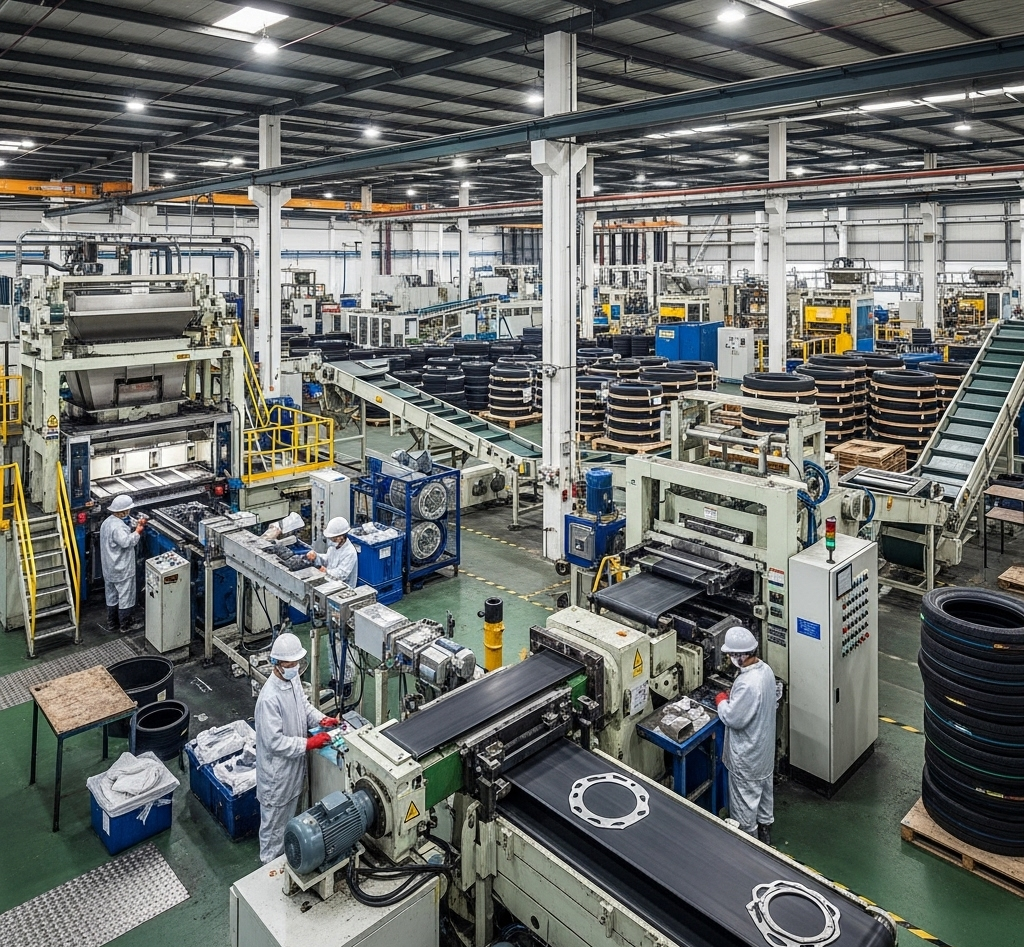
In the fast-paced world of global commodities, few industries face as much volatility as rubber supply management. Natural rubber, sourced primarily from Southeast Asia, and synthetic rubber, derived from petrochemicals, are critical for everything from automotive tires to medical devices and consumer goods. Yet, with production shortfalls, rising demand, and external pressures like geopolitical tensions and raw material shortages, managing these supplies efficiently has never been more challenging. Innovative digital tools like vendor portals and data dashboards are emerging as game-changers, enabling real-time visibility, collaboration, and decision-making to keep supply chains resilient and responsive.
This blog post explores how these technologies are transforming rubber supply management, highlighting their features, benefits, and real-world applications. Whether you’re a procurement manager, supplier, or industry stakeholder, understanding these tools can help you stay ahead in an unpredictable market.
Before diving into solutions, it’s essential to grasp the hurdles. The rubber industry continues to grapple with a persistent production shortfall amid surging global demand, exacerbated by climate impacts on plantations and supply disruptions from key producers like Thailand and Indonesia. Broader supply chain issues compound this: geopolitical risks, including tariffs and trade wars, are inflating costs and delaying shipments. Labor shortages in manufacturing and logistics, coupled with economic instability, make forecasting and inventory management a nightmare. Additionally, regulatory pressures like the EU Deforestation Regulation (EUDR) demand greater traceability, forcing companies to prove sustainable sourcing or face penalties.
Traditional methods—spreadsheets, emails, and manual tracking—simply can’t keep up with these real-time demands. Delays in communication between buyers and suppliers lead to stockouts, overstocking, and wasted resources. Enter vendor portals and data dashboards: digital lifelines that address these pain points head-on.
A vendor portal, also known as a supplier portal, is an online platform that centralizes interactions between buyers and suppliers. Think of it as a secure, shared hub where vendors can access orders, submit invoices, track shipments, and communicate directly with procurement teams.
In the rubber industry, where suppliers range from smallholder farmers to large synthetic producers, these portals are invaluable. Key features include:
The benefits are clear: improved collaboration reduces costs by up to 20-30% through faster onboarding and fewer manual processes. For rubber buyers, this means quicker responses to market fluctuations, like sudden price spikes in natural latex due to weather events. Companies like IKEA have successfully implemented similar portals to streamline supplier onboarding and minimize errors in their commodity chains.
While vendor portals handle the “who” and “how” of supply interactions, data dashboards focus on the “what” and “why”—providing visual, actionable intelligence from vast datasets. These interactive tools aggregate data from multiple sources, including ERP systems, IoT sensors, and vendor portals, to display key performance indicators (KPIs) in real-time.
For rubber supply management, dashboards are particularly powerful in monitoring volatile elements like inventory levels and demand forecasts. Essential features and metrics include:
In industries like tire manufacturing, which heavily relies on rubber, companies have used AI-powered dashboards to gain end-to-end visibility, minimizing disruptions through custom reporting. Tools like Power BI have been leveraged for enhanced forecasting and inventory optimization, as seen in Bridgestone’s operations. Overall, these dashboards turn raw data into strategic advantages, improving efficiency and reducing waste.
The true magic happens when vendor portals and data dashboards work in tandem. Data from portals—such as order updates and supplier metrics—feeds directly into dashboards, creating a seamless, real-time ecosystem. This integration allows for proactive management: if a supplier delays a rubber shipment, the dashboard flags it instantly, triggering alternative sourcing or inventory reallocations.
Benefits extend beyond operations. Enhanced visibility supports sustainability goals, like tracking deforestation-free rubber under EUDR, with platforms offering automated dashboards for compliance. Cost savings come from reduced overstocking and better negotiation leverage, while faster decision-making builds resilience against risks, like economic instability or tech disruptions.
A case study from the packaged food sector (adaptable to commodities like rubber) shows how a global giant used integrated dashboards to boost supply chain effectiveness through improved data visibility, resulting in optimized inventory and reduced lead times. In the defense industry, a supplier intelligence system with digital dashboards streamlined procurement, offering a model for rubber’s complex global networks.
As the rubber industry evolves, adopting vendor portals and data dashboards isn’t just an option—it’s a necessity for survival in a world of shortages and uncertainties. With AI and IoT advancing, these tools will become even more predictive, potentially incorporating blockchain for unbreakable traceability.
© 2025 Lasso Supply Chain Software LLC
Get instant access to our report on the Top Procurement Trends of 2025 by filling out the form below.

Get instant access to our report on the Top Procurement Trends of 2025.